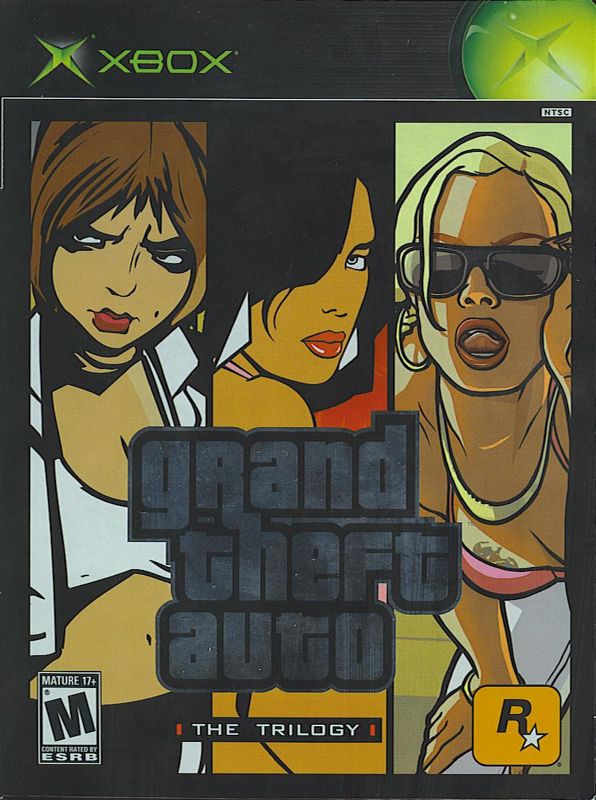Retro Replay Review
Gameplay
The Grand Theft Auto: The Trilogy collection bundles three genre-defining titles—Grand Theft Auto III, Grand Theft Auto: Vice City, and Grand Theft Auto: San Andreas—each of which revolutionized open-world gameplay in its own right. GTA III laid the foundation: an isometric sandbox reimagined in 3D, packed with cinematic missions, memorable side-quests, and the freedom to cause downtown mayhem. Vice City built on that groundwork by injecting an ’80s Miami vibe, refined vehicle handling, and a wider arsenal of weapons and vehicles. San Andreas then pushed the formula further with RPG-style progression, character customization, and a sprawling map that spans cities, countryside, and even the skies.
Across all three titles, mission design remains a highlight. From bank heists and street races to assassination contracts and elaborate set-piece chases, each game offers a diverse array of objectives that balance creative storytelling with engaging action. While the core “steal, shoot, and speed off” loop never grows stale, the differing tones—from the gritty underbelly of Liberty City to the neon-lit streets of Vice City and the gang-war drama of San Andreas—keep players hooked for dozens of hours.
The remastered Trilogy modernizes the control schemes, giving current-gen console users analogue aiming and re-mapped button layouts, while PC and mobile ports benefit from customizable keybindings and touch-friendly HUD elements. Quality-of-life tweaks include updated checkpoints, an improved camera system, and stability patches that smooth out many of the rough edges present in the original releases. Although some late-game missions can still feel punishing by today’s standards, the overall gameplay experience remains rewarding and richly varied.
Graphics
The visual overhaul in Grand Theft Auto: The Trilogy is immediately noticeable, with reworked lighting models, higher-resolution textures, and more detailed environmental effects. Character models have been smoothed out, shadows fall more naturally, and reflections on car windows and water surfaces enhance immersion. These upgrades breathe new life into Liberty City’s murky alleyways, Vice City’s neon glow, and San Andreas’s sun-drenched highways.
However, the remaster’s polish is uneven at times. While neon signs and city skylines in Vice City dazzle with vibrant hues and dynamic lighting, GTA III’s tighter map and older assets sometimes feel like a cosmetic gloss over dated geometry. San Andreas benefits the most from the facelift, its sprawling landscapes and varied biomes looking sharper and more alive than ever—though draw-distance pop-in can still jolt you back to 2004.
Performance is generally solid across platforms, delivering stable frame rates on modern consoles and mid-range PCs. Mobile versions offer surprisingly faithful renditions, though touchscreen controls can impact camera maneuverability. Minor graphical glitches—such as flickering textures or occasional lighting inconsistencies—pop up here and there, but they rarely detract from the overall visual spectacle of revisiting these classic worlds.
Story
The narrative tapestry in this trilogy covers three very different slices of crime drama. In GTA III, players follow the silent protagonist Claude as he claws his way up Liberty City’s criminal hierarchy, uncovering betrayal and corruption at every turn. Its minimalist approach—few voiced lines, sparse cutscenes—lets you project your own outlaw fantasies onto the game’s blank-slate hero.
Vice City ups the stakes with Tommy Vercetti, a loquacious gangster voiced by Ray Liotta, whose razor-sharp wit and colorful dialogue anchor a story brimming with betrayals, power struggles, and ’80s pop culture references. From neon-lit nightclubs to drug deals gone wrong, the plot moves at a breakneck pace, buoyed by an iconic soundtrack that underscores every high-octane chase.
Finally, San Andreas delivers the trilogy’s most ambitious narrative, weaving in themes of family loyalty, gang warfare, and systemic corruption. Carl “CJ” Johnson’s emotional arc—from grieving returned exile to kingpin of Los Santos—drives a sprawling tale that spans city streets, desert wastelands, and military bases. This deeper character work and episodic storytelling make San Andreas feel like the richest drama in the pack.
Overall Experience
Revisiting the roots of modern open-world gaming through Grand Theft Auto: The Trilogy is a nostalgic and thrilling journey. Each chapter offers its own distinct atmosphere, pacing, and design philosophy, yet they cohere into a comprehensive anthology of Rockstar’s early genius. Whether you’re a newcomer eager to experience how sandbox adventures began or a veteran craving a trip down memory lane, this collection delivers massive entertainment value.
That said, the remaster is not without its quirks. Occasional bugs, audio‐sync issues, and the sometimes stiff handling of vintage mechanics can remind you that these titles originated two decades ago. Still, the enduring quality of the writing, mission design, and sheer scale of content far outweighs these technical shortcomings.
At its core, Grand Theft Auto: The Trilogy remains a must-play anthology. Three sprawling cities, hundreds of missions, and countless hours of exploration and mayhem make this a benchmark collection for open-world enthusiasts. If you can embrace a few rough patches in service of gaming history, you’ll find an expansive, immersive adventure that continues to influence blockbusters today.
 Retro Replay Retro Replay gaming reviews, news, emulation, geek stuff and more!
Retro Replay Retro Replay gaming reviews, news, emulation, geek stuff and more!




Reviews
There are no reviews yet.